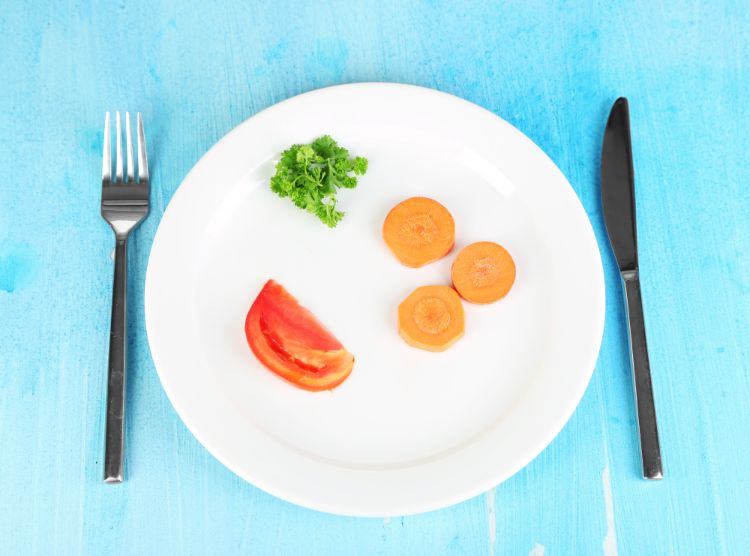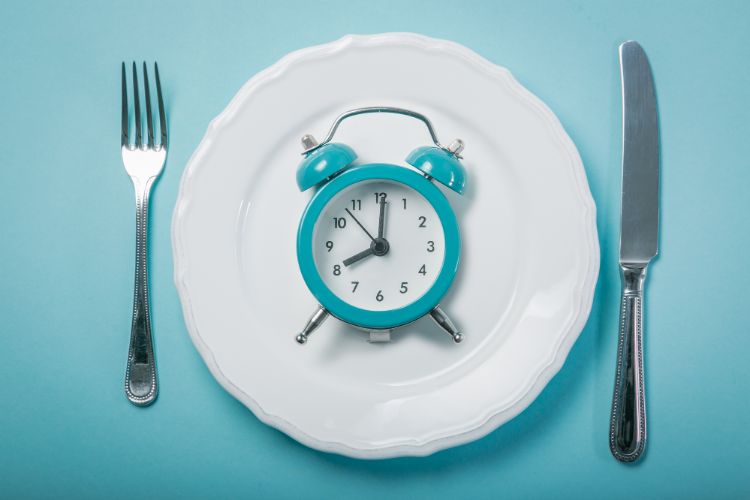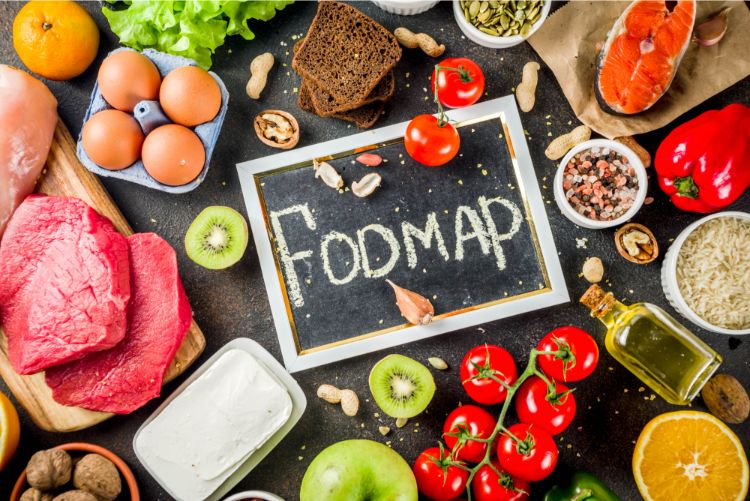Detailed review of the 5:2 diet with links to scientific research
The 5:2 diet is one of the options for interval fasting, in which a person eats 5 days a week in the usual way, and limits the diet to 500-600 calories for the remaining 2 days.
The diet was popularized by British journalist Michael Mosley.
Such a diet is effective in order to correct body weight and prevent many diseases from the endocrine and cardiovascular systems. However, even such a diet has contraindications and side effects that should be taken into account.
Content
What does the 5:2 method mean?

The 5:2 diet is one of the varieties of periodic fasting, which involves eating in the usual way 5 days a week. Then, for 2 days, you should limit the amount of food to 25% of the daily requirement, which is about 500 calories for women, 600 calories for men.
At the same time, 2 days of fasting do not necessarily have to follow each other. Any alternation is allowed (at your own discretion). The most common option is to go hungry on Monday and Thursday. It is believed that in this case the body adapts better to this scheme.
On days when food intake is not limited, it is still recommended not to overeat, observing the daily calorie content of the diet. Excessive food consumption is fraught with leveling the positive properties of the diet and even the development of obesity.
To find out how many calories the body needs per day, you can use the following formulas:
For men: Daily calorie content = 88.36 + (13.4 x weight, kg) + (4.8 x height, cm) – (5.7 x age, years).
For women: Daily calorie content = 447.6 + (9.2 x weight, kg) + (3.1 x height, cm) – (4.3 x age, years).
6 useful properties
 Regardless of the specific scheme, Interval fasting is good for humans
.
Regardless of the specific scheme, Interval fasting is good for humans
.
Protocol 5/2 also has proven beneficial properties. The main ones are considered below:
- Neuroprotective effect. Experiments on rodents conducted by American scientists, shown that , against the background of intermittent fasting, toxic damage to nerve tissues decreases.
- Prevention of atherosclerosis. Proven that the 5:2 protocol leads to reduction of total cholesterol and its atherogenic fractions in the blood. Cholesterol levels decreased by 21%, LDL – by 25%, TAG – by 32%. Dyslipidemia is the main risk factor for the development of atherosclerosis and related complications (coronary heart disease, myocardial infarction, stroke).
- Weight loss. According to the data foreign scientists, when following a diet, weight decreases (on average) by 5.6 kg in 8 weeks.
- Prevention of type II diabetes mellitus. Specialists from the UK discovered that interval fasting increases the sensitivity of peripheral tissue cells to insulin, which has a positive effect on glucose metabolism in the body and significantly reduces the risk of early development of impaired glucose tolerance and type II diabetes mellitus.
- Strengthening the immune system. Employees of the Medical Center at the University of Louisiana (USA) revealed that against the background of systematic starvation, there is a decrease in the frequency of various infectious pathologies (acute respiratory infections and specific groups of diseases).
- Improvement of the course of bronchial asthma. A study conducted in 2007, demonstrated that interval fasting has a beneficial effect on the course of bronchial asthma and provides reliable prevention of exacerbations. The symptoms of pathology decreased significantly after 2 weeks.
A separate one should be noted one of the major studies spent in the USA. After 12 weeks, the following changes were detected in people following the 5/2 fasting regimen:
- Weight loss by 5 kg;
- Reduction of body fat by 3.5 kg;
- TAG level drop by 20%, HDL increase;
- Reduction or complete disappearance of CRP;
- Decrease in leptin concentration by 40% (hunger hormone).
Effectiveness for weight loss
 We have already written about the effectiveness of interval fasting for weight loss
.
We have already written about the effectiveness of interval fasting for weight loss
.
The 5/2 diet is a very effective weight loss regimen. It allows you to significantly limit the calorie content of the diet and speed up metabolism, but at the same time not lose muscle tissue.
Australian Scientists claim that intermittent fasting leads to significantly greater weight loss than the usual diets with limited intake of nutrients into the body. The technique reduces appetite and does not affect the adaptive mechanisms of energy regulation.
According to the data specialists from Canada, a year after the transition to systematic restriction of food, body weight, waist circumference, adipose tissue volume, as well as glycemic and cholesterol profiles completely return to normal.
As an example, we can cite several important studies that dealt with weight loss while observing periodic fasting:
- Reduction of total body weight by 3-8% with a fasting period of 3 weeks or more.
- Decrease Waist circumference by 4-7% in 3-8 weeks.
- Almost complete absence muscle tissue loss.
- High performance at combined such a diet regime with strength exercises. This combination leads to a significant increase in endurance.
How to eat properly on fasting days?
 The diet does not imply specific rules regarding the quality of the composition and time of meals on fasting days. Each person chooses an individual option for himself.
The diet does not imply specific rules regarding the quality of the composition and time of meals on fasting days. Each person chooses an individual option for himself.
In most cases, people follow one of the following patterns:
- 3 meals (breakfast, lunch and dinner);
- 2 meals (lunch and dinner).
The calorie content of the daily diet is limited: about 500 calories for women, 600 for men.
It is recommended to give preference Fiber-rich foods and protein. This will increase the feeling of satiety and satisfy hunger.
During the fasting days, the menu should be varied. Here are some options for dishes that you can give preference to:
- Vegetable salads. Any natural products (cauliflower, broccoli, carrots) are suitable.
- Natural yoghurts with berries (ideal option – strawberries, strawberries, blueberries).
- Hard-boiled or baked eggs.
- Lean meat.
- Fried fish.
- Rice with cauliflower.
- Soups.
- Black coffee or tea without sugar.
- Water or various sugar-free drinks (it is recommended to carefully study the composition in order to exclude the ingestion of large amounts of dyes, preservatives; flavor enhancers can increase appetite several times).
Recipes for dietary dishes
Below are some quick recipes that are ideal for fasting days using the 5:2 diet method.
| Breakfast | Spinach omelet | 94 calories |
| Ingredients | Cooking method | |
|
|
|
| Breakfast | Greek yogurt with berries | 96 calories |
| Ingredients | Cooking method | |
|
|
|
| Breakfast | Oatmeal porridge | 99 calories |
| Ingredients | Cooking method | |
|
|
|
| Lunch | Leek soup with potatoes | 134 calories |
| Ingredients | Cooking method | |
|
|
|
| Lunch | Corn Puree salad | 152 calories |
| Ingredients | Cooking method | |
|
|
|
| Dinner | Chinese Vegetable Soup | 170 calories |
| Ingredients | Cooking method | |
|
|
|
| Dinner | Fast Fish Burger | 141 calories |
| Ingredients | Cooking method | |
|
|
|
Safety, contraindications
 In the first days of interval fasting, a strong feeling of hunger may appear, but after a few days it disappears.
In the first days of interval fasting, a strong feeling of hunger may appear, but after a few days it disappears.
Also at the beginning of the diet, the following side effects may develop due to the low energy value of the diet:
- Weakness;
- Vertigo;
- Drowsiness;
- Photopsies (sticks or flies in front of the eyes).
The development of these reactions indicates exhaustion of the body and should serve as a reason to stop the diet or temporarily change its rules (increase the amount of food consumed).
If headaches and stool disorders such as constipation occur, you need to stop the diet and consult a doctor.
It is important to note that the 5:2 diet has important contraindications:
- Diseases of the digestive system (cholelithiasis, peptic ulcer of the stomach and duodenum).
- Pregnancy and breastfeeding.
- Body weight deficit (BMI less than 18.5).
- Pathologies of the female reproductive system accompanied by infertility.
- Age less than 14 and over 75 years old.
- Hyperthyroidism.
- Chronic cardiac (IIb-III), liver or kidney failure.
- Cirrhosis and viral hepatitis.
- Hypertension.
- Type I diabetes mellitus.
Conclusion
- Thus, the 5/2 fasting scheme is a simple and effective way to reduce body weight and improve the health of the entire body.
- The diet allows you to normalize the concentration of glucose and cholesterol in the blood, prevent a number of serious diseases from the cardiovascular and endocrine systems.
- It is equally important to monitor the energy value of the diet on days when the calorie content is not limited. Overeating can negate all beneficial properties.
- In case of side effects or contraindications, it is recommended (at least temporarily) to abandon the diet and consult a doctor.




